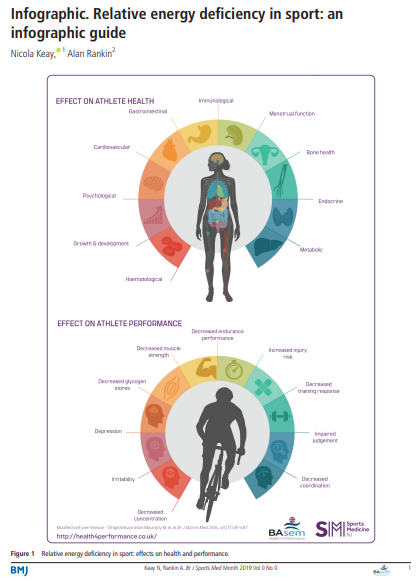Did you know that, according to a 2024 study, about 20% of adolescent athletes will deal with a bone stress injury? This includes anything on the spectrum of what’s called a stress reaction to a stress fracture.
To me, that is a big percentage, but it’s also not a big surprise when I think about the number of athletes I have seen with stress fractures in the past 9 years. In fact, stress fractures are one of the top 3 reasons I see young athletes in my practice.
So, today, I’m dedicating a blog specifically to this serious injury. Let’s dive in…
First of all, WHY are stress fractures such a big deal?
stress fractures are such a big deal because:
They are painful.
They can often be season - ending injuries, taking 6 weeks or more to heal, depending on the severity.
They appear to “come out of nowhere”. In other words, athletes typically don’t know the injury is coming or they don’t know how to listen to potential warning signs until it’s too late.
They can create very discouraged athletes because they take athletes out of their sport for a long time. Sometimes athletes also feel a weight of responsibility when they realize this injury might not have happened if they had known certain facts.
Now that you see the big deal, let’s get into the science…
What is a stress fracture?
A stress fracture is a type of bone stress injury in which the bone experiences inflammation and swelling followed by a full or partial break. Diagnosis typically takes an athlete out of their sport for at least 6 weeks to give the bone time to heal.
How / Why Do Stress Fractures Occur?
Stress fractures are known as overuse injuries. They occur when high frequency of load is placed repeatedly on the bone like with gymnasts, runners, dancers, figure skaters and rowers. And often there is also one of the following present:
(a) not enough time given for rest and recovery
(b) a nutrient imbalance or
(c) both an imbalance of rest and of nutrition
The typical progression of this injury looks like:
inflammation of the tissue around the bone progressing to
edema (swelling with fluid) of the bone itself (aka - a stress reaction) and finally progressing to
an actual break in the bone (aka - a stress fracture).
What is nutrition’s role in stress fractures?
A stress fracture is an injury to the bone. Certain nutrients in the diet contribute to bone strength, growth and development. So, when there is an imbalance in these certain nutrients, it can put the bones at risk of injury.
Since we said a stress fracture typically involves an imbalance of nutrition, let’s first look at 2 most common reasons for the nutrient imbalance. I call the reasons either (1) a Primary Imbalance, one that was present prior to any increases in training or (2) a Secondary Imbalance, one that was a result of such a high volume of training. Let me share an example of each scenario…
Scenario 1: Primary Nutrient Imbalance
Jane loved running. She was a distance runner and had always been one of the top performers on her team. From reading various articles and tuning into social media she began to feel she needed to be leaner in order to further increase her times. So, her meals and snacks became much more rigid, her carbohydrate intake was restricted and she focused intently on eating clean each day, whether she was home, school or at a restaurant with friends. This change in eating combined with consistent training, and even increased training mileage as she got more serious, created a nutrient imbalance that could not support the constant pressure on her bones and body.
Scenario 2: Secondary Nutrient Imbalance
Mary had an excellent food intake at her level of figure skating. She had no prior injuries and performed well. In a short period of time, Mary moved up a level and with that she added in morning practices 3 days a week + additional off-ice conditioning classes. Mary didn’t think much about changing her diet because it had always worked well for her. However, the added training put more strain on her body. And some days, due to before-school practices, her intake went down because she had less time for a quality breakfast. This change in routine left Mary with a higher repeated work load on her bones and an inadequate intake of nutrients to support her body’s needs.
What Nutrients Should You Focus On?
Regardless of the reason for the nutrient imbalance, it’s important to get it fixed as soon as possible. As the athlete works to fix the imbalance, they should focus on key nutrients for bone health… those nutrients that will help keep the bone strong and healthy under immense training load coupled with growth spurts and development (remember, the body builds about 90% of it’s bone in childhood and adolescence!). Some key nutrients to think about include:
Calcium
Vitamin D
Total Calories (i.e…. no underfueling)
Magnesium
Iron
This blog will not go through the specifics of each nutrient, but it’s important that the young athlete is educated on these nutrients and coached on how they can get them in their meals and snacks each day.
If you have concerns about stress fractures in your young athlete
I am taking clients struggling with this specific injury. If you would like to discuss working together, you can reach out to me HERE to schedule a free 15 minute Discovery Call.
Also, if you feel your athlete needs to learn more about nutrition related to stress fractures, please stay tuned because I’m releasing a self-paced recorded course in just a few weeks that dives into this very topic! It will be excellent education for the young athlete and it gives them action items to start improving their meals and snacks to support bone health. To get more details and stay up on its release, you can follow me on Instagram (@taylormorrisonRD) or sign up for my brief weekly emails by sending me a DM on Instagram saying “Newsletter”!
Another option for first steps may also be my Ending Underfueling Course. Being underfueled is a HUGE risk factor for stress fractures. If you think your athlete isn’t eating enough to support all the training they are doing in their sport this is a great self-paced course to get them eating a variety of different foods that will help them feel fueled, help them start eating enough of those foods, and support good bone health. You can grab it today and have access to it for 6 months!
I hope that today’s article shines a light on the serious injury that is a stress fracture. I hope it helps you take first steps to thinking through what you and your athlete can do to build and keep strong bones as they train and compete in their sport.
Wishing you a well-fueled young athlete,
Taylor











